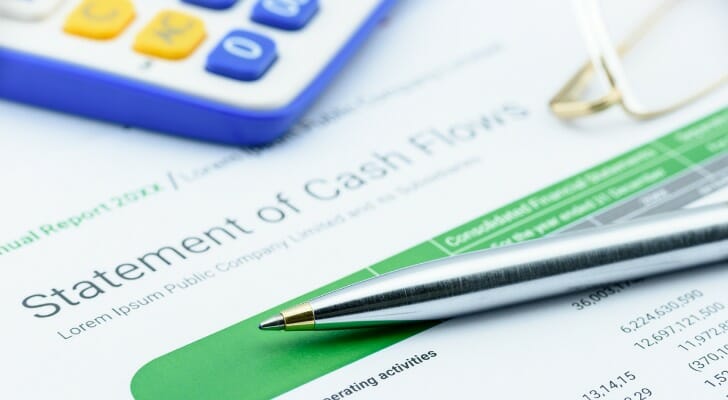Free cash flow is a measure that helps business owners, investors and others assess a business’s financial performance and outlook. Free cash flow is defined as operating cash flow minus capital expenditures. Strong free cash flow can indicate that a company is well-run and making money off its operations. It can also be affected by investing more or less in long-term capital assets, changing the way a company collects from customers and pays suppliers and by selling off corporate assets.
A financial advisor can help you create a financial plan for your investing needs and goals.
Calculating Free Cash Flow
Figuring free cash flow requires subtracting capital expenditures from operating cash flow. The formula looks like this:
Free cash flow = operating cash flow – capital expenditures
Calculating free cash flow starts with figuring operating cash flow. To figure operating cash flow, subtract operating expenses from total sales. Operating expenses consist of costs such as employee wages and salaries, rent, utilities, insurance, repairs and supplies that are necessary to keep the business running.
After calculating operating cash flow, determine capital expenditures (CapEx). CapEx consists of expenditures used to acquire assets that will be useful beyond the current tax year. It may include land, buildings, equipment, machinery, vehicles and the like. A line item for CapEx is found in a company’s cash flow statement. To figure CapEx, take the value of the company’s property, plant and equipment (PP&E) from the current year or other period. Subtract from that the PP&E figure from the prior period. Add back in depreciation charges for the current period to get CapEx.
For example, a landscaping company with annual sales of $200,000 and operating expenses of $50,000 would have operating cash flow of $150,000. CapEx came to $40,000 for a new vehicle and mowing equipment. So it’s free cash flow would be $110,000.
Annual sales $200,000 – Operating expenses $50,000 – CapEx $40,000 = Free cash flow $110,000.
Uses for Free Cash Flow

Generally speaking, more free cash flow is better than less. There’s no specific percentage of sales that is a benchmark for free cash flow. However, higher levels of free cash flow indicate that a company is more profitably serving its customers. Public companies, especially those that are not generating a profit, sometimes highlight strong free cash flows as an indication that they are running the business skillfully and responsibly. Stock analysts may point to high levels of free cash as an indicator that a company could raise its stock dividend, buy back its own shares, acquire another firm or take other actions to boost share prices.
Low levels of free cash flow could indicate that a company is not adequately funding its operations using internally generated cash flow and eventually may need more cash from lenders or investors. However, free cash flows might also be low if a company is making long-term investments in big-ticket business assets that will help it do better in time.
It may be more important to be able to show that free cash flow is increasing over time or at least stable than that it is at a certain level. A business with decreasing free cash flow may be on a long-term trend toward insolvency unless whatever is causing the decline is corrected. In addition to business owners and managers, lenders, investors and prospective partners may all use free cash flow as a way to evaluate a business
What Affects Free Cash Flow
When free cash flow is low or declining in the absence of large capital expenses, it’s not always a sign of weak management or poor financial health. It could also be caused by a single large order of inventory, a period of unusually rapid growth or an increase in working capital.
Likewise, ballooning free cash flow isn’t necessarily positive. Free cash flow can increase if the company begins selling corporate assets, reducing investments in long-term assets or cutting outlays for activities such as maintenance and marketing. Free cash flow can also be increased if a company begins paying its suppliers more slowly and accelerating receipts from customers. A one-time event such as a large deposit for a big order can temporarily increase free cash flow.
Bottom Line

Free cash flow shows how a company is doing at generating cash from its operations, after accounting for the effects of any big-ticket capital expenses. It can indicate whether a company is in good financial health and running efficiently and effectively or potentially headed for long-term challenges.
Tips for Analyzing Businesses
- Consider working with an experienced financial advisor if you are considering an investment in a company based on its free cash flow. SmartAsset’s free tool matches you with up to three vetted financial advisors who serve your area, and you can interview your advisor matches at no cost to decide which one is right for you. If you’re ready to find an advisor who can help you achieve your financial goals, get started now.
- Besides free cash flow, another key tool for evaluating businesses is discounted cash flow. It’s a way of analyzing whether an investment by a company is worth the cost using the time value of money.
Photo credit: ©iStock.com/imagedepotpro, ©iStock.com/PeopleImages, ©iStock.com/ogichobanov
